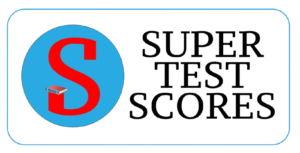SUPERStudy: Middle Cerebral Artery (MCA) Infarction
Introduction
Middle cerebral artery (MCA) infarction is the most common type of ischemic stroke, resulting from blockage of the MCA, which supplies large portions of the cerebral cortex involved in motor, sensory, and language function. MCA strokes cause significant morbidity and are considered neurological emergencies requiring immediate management.
Etiology
- Atherosclerosis and thromboembolism (most common cause): Plaques and clots often originate in the carotid arteries or the heart (cardioembolic stroke).
- Embolism from atrial fibrillation or myocardial infarction
- Small-vessel disease: Lacunar infarctions affecting penetrating branches of the MCA
- Hypercoagulable states: E.g., malignancy, inherited thrombophilias
- Vasculitis: Autoimmune conditions affecting the cerebral vessels (e.g., giant cell arteritis)
Epidemiology
- Most common site of ischemic stroke (over 70% of large-vessel strokes involve the MCA).
- More common in individuals with hypertension, diabetes, atrial fibrillation, or carotid artery disease.
- Increasing incidence with age; more prevalent in men than women.
Pathophysiology
- MCA occlusion leads to ischemia and infarction in regions supplied by the artery, which include the primary motor and sensory cortex, Broca’s and Wernicke’s areas (dominant hemisphere), and the frontal eye fields.
- Loss of oxygen and nutrients triggers cellular injury and neuronal death through mechanisms like excitotoxicity and free radical damage.
- Ischemic damage extends to the internal capsule and basal ganglia if proximal branches are involved.
- Penumbra zone: The area of ischemic tissue surrounding the core infarction that may be salvageable with timely intervention.
Clinical Manifestations
- Motor and Sensory Deficits:
- Contralateral hemiparesis (face, arm > leg) due to involvement of the motor cortex.
- Contralateral hemisensory loss (face, arm > leg) affecting the sensory cortex.
- Visual Disturbances:
- Contralateral homonymous hemianopia (damage to optic radiations)
- Gaze preference toward the side of the lesion (involvement of the frontal eye fields)
- Language Deficits (Dominant Hemisphere – usually left):
- Broca’s aphasia: Non-fluent speech but preserved comprehension
- Wernicke’s aphasia: Fluent speech with impaired comprehension
- Global aphasia: Involvement of both Broca’s and Wernicke’s areas
- Neglect (Non-dominant Hemisphere – usually right):
- Hemispatial neglect: Lack of awareness of the contralateral side
- Anosognosia: Lack of awareness of the deficit
- Other Signs:
- Agraphia, acalculia, and alexia in dominant hemisphere infarctions
- Apraxia (difficulty with planned movements)
Diagnosis
- Neuroimaging:
- Non-contrast CT scan: Initial imaging to rule out hemorrhage
- MRI (diffusion-weighted imaging): More sensitive for detecting early ischemic changes
- CT angiography or MR angiography: To identify vessel occlusion
- Laboratory and Cardiac Workup:
- Blood glucose, coagulation studies, and lipid profile
- ECG: To rule out arrhythmias (e.g., atrial fibrillation)
- Echocardiography: To assess for cardioembolic sources
- Vascular Studies:
- Carotid ultrasound or Doppler to assess for carotid artery stenosis
Treatment
- Immediate management:
- Intravenous thrombolysis (tPA): If within 4.5 hours of symptom onset and no contraindications
- Endovascular thrombectomy: For large-vessel occlusion within 24 hours of onset
- Supportive care:
- Airway and oxygen support
- Blood pressure control
- Blood glucose management
- Long-term management:
- Antiplatelet therapy: Aspirin or clopidogrel
- Anticoagulation: For cardioembolic stroke (e.g., atrial fibrillation)
- Statins: To reduce atherosclerotic risk
- Lifestyle modification: Smoking cessation, exercise, and control of comorbidities (hypertension, diabetes)
Prognosis
- Prognosis depends on the size and location of the infarction, time to treatment, and age.
- Good outcomes are associated with early reperfusion therapy (tPA or thrombectomy).
- Severe infarctions involving the entire MCA territory may lead to brain swelling and herniation, which can be fatal.
Memory Aid or Mnemonic:
“MCA STROKE” mnemonic for common symptoms:
- M: Motor deficit (contralateral face and arm weakness)
- C: Contralateral sensory loss
- A: Aphasia (if dominant hemisphere affected)
- S: Spatial neglect (if non-dominant hemisphere affected)
- T: Top gaze deviation (eyes toward lesion)
- R: Right or left-sided visual field loss (homonymous hemianopia)
- O: Optic radiation damage
- K: Knocked-out higher functions (apraxia, agraphia, anosognosia)
- E: Emergency treatment with tPA or thrombectomy
SUPERPoint:
MCA infarction is the most common type of ischemic stroke, causing contralateral hemiparesis, sensory loss (face/arm > leg), aphasia, or neglect. Early recognition and timely thrombolysis or thrombectomy are crucial for optimizing outcomes and preventing complications.
SUPERFormula:
Patient presents with contralateral hemiparesis + sensory loss + aphasia (dominant) or neglect (non-dominant) + homonymous hemianopia + Atherosclerotic embolism + occlusion of the MCA + + emergent reperfusion therapy = Middle Cerebral Artery Infarction
Reference:
Go S, Kornegay J. Stroke Syndromes. In: Tintinalli JE, Ma O, Yealy DM, Meckler GD, Stapczynski J, Cline DM, Thomas SH. eds. Tintinalli’s Emergency Medicine: A Comprehensive Study Guide, 9e. McGraw-Hill Education; 2020.
